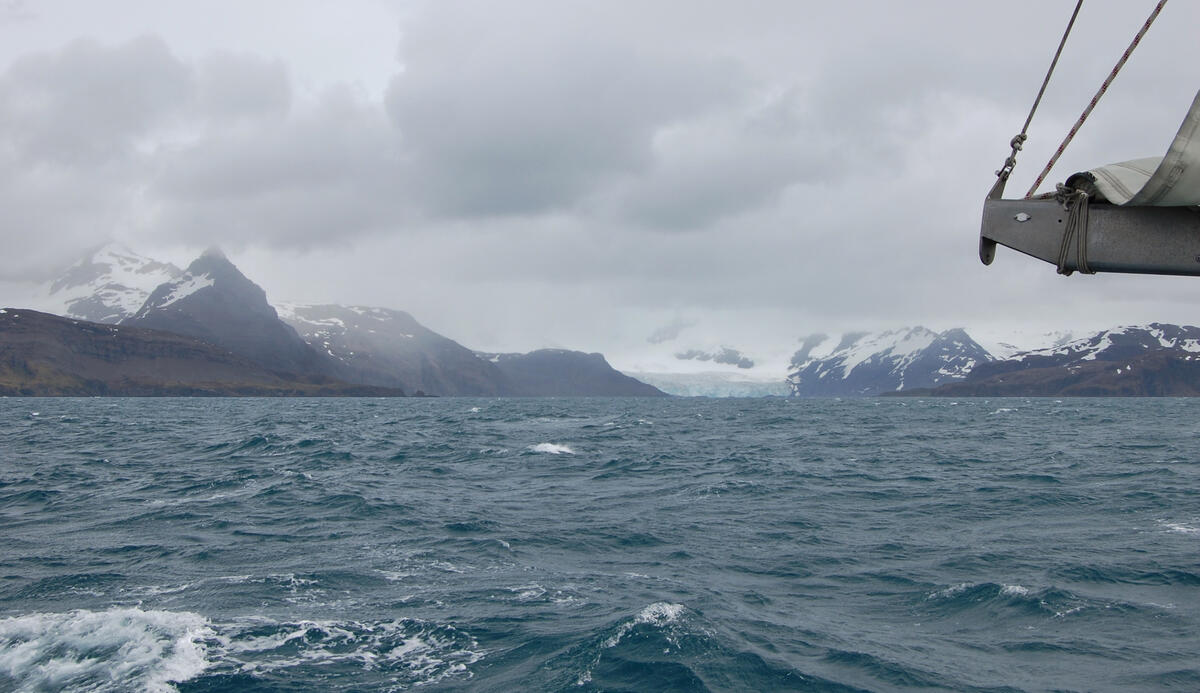In Stromness Bay are the sites of three former whaling and sealing stations: Husvik, Stromness, and Leith Harbour. Stromness itself is where Shackleton and his escape party arrived after crossing the island from the Caird’s landing site on the south coast. Husvik was a floating offshore factory in 1907, expanded onshore a few years later to be finally closed in 1960. Leith Harbour, operational from 1909 to 1965, was run by a Scottish firm, and was the largest of the seven whaling stations.
These stations offer a glimpse into the island’s long forgotten industrial history: most equipment, simply abandoned and left to the elements, remains where it was in its final days of use. Rust is the prevalent color with which this picture is saturated, in the corroded forms of buildings, ships, boats, tractors, and scrap steel.
Husvik and Leith Harbour
The scenery and light is ever changing. The filtered daylight and haze conspired with the natural greens, artificial reds, and strangely textured hill sides to offer a pastel scene.
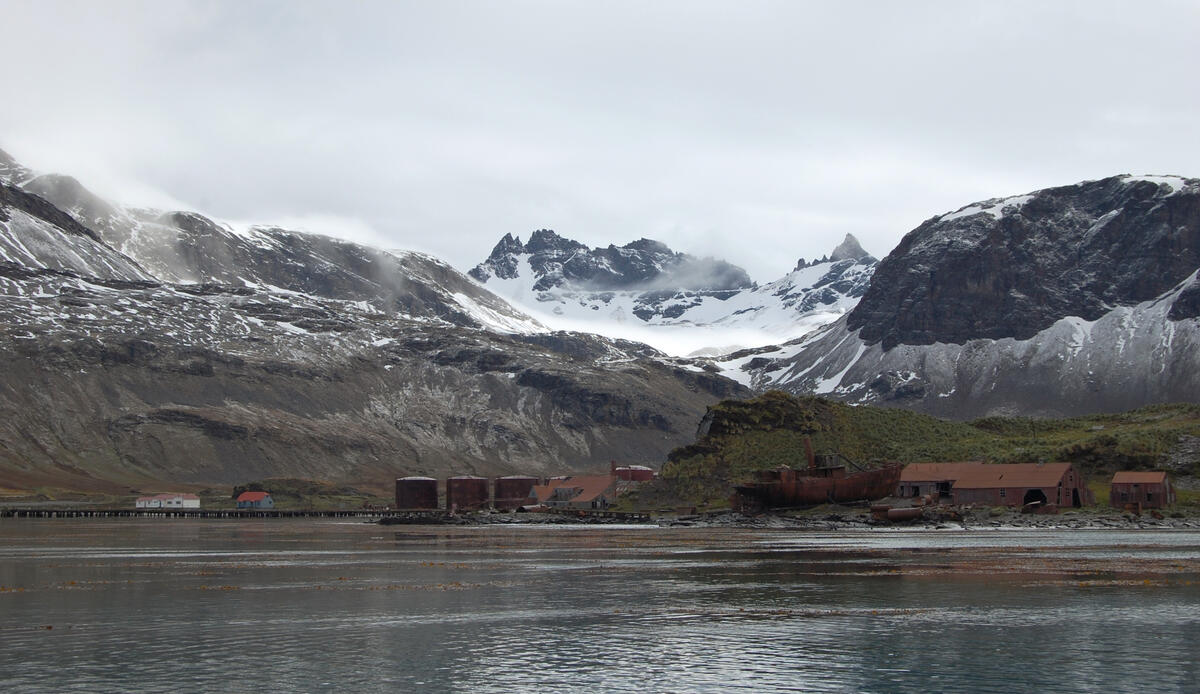
Most of the old buildings at Husvik, including the jetty, are considered dangerous and are off limits to visitors. The maintained buildings are used by KEP scientists.
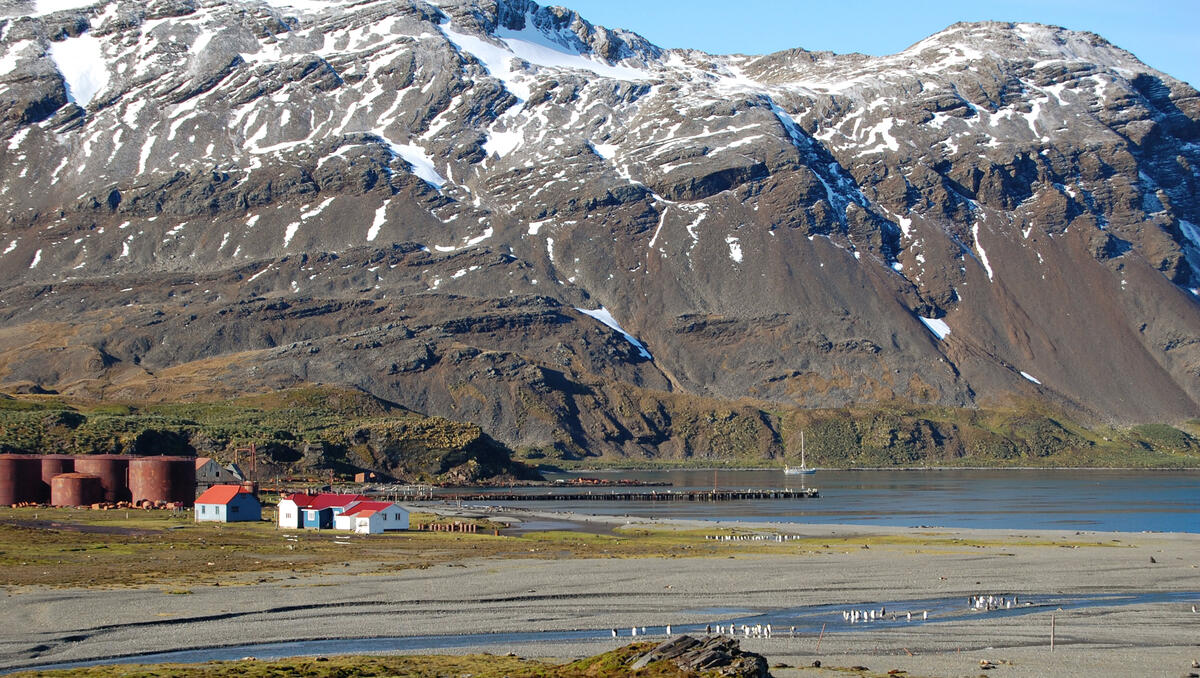
A testament to the lucrativeness of the whaling and sealing industries, the stations were incredibly well set-up for such small outposts. Everything was repaired and maintained locally if possible, including ships.
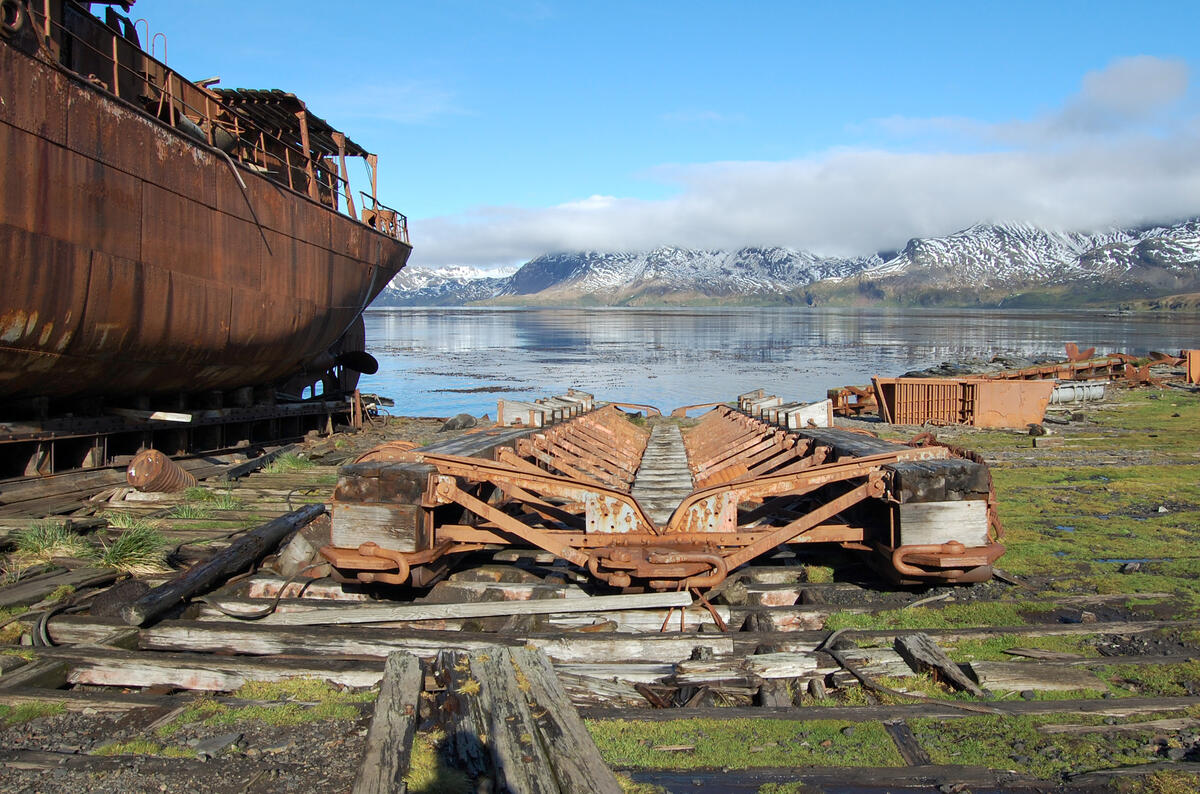
In the breeding months, the fur seals are territorial and aggressive. They calm down after their pups like these are big enough to be less vulnerable.
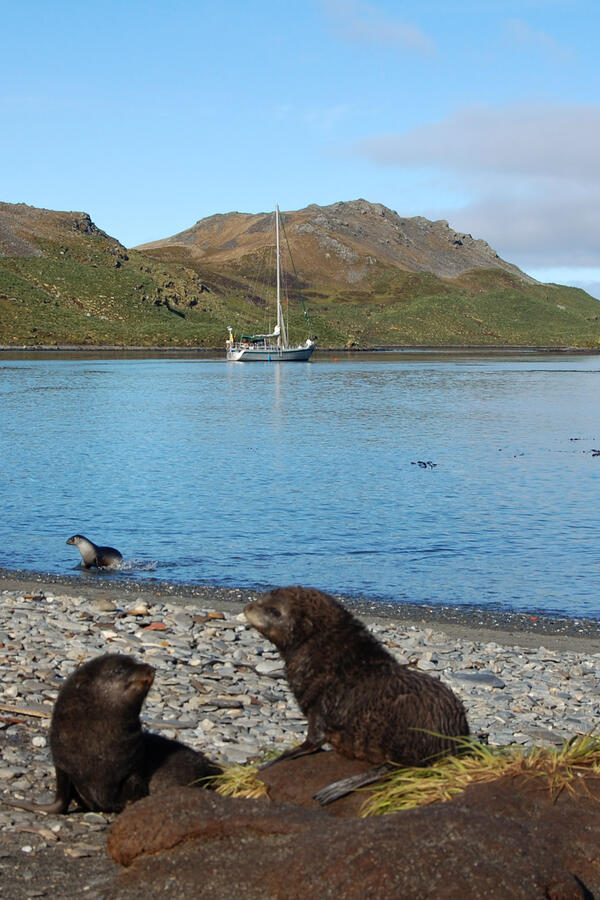
Husvik and Stromness Bay is spectacular, but capable of changing its mood if the weather is not cooperative.
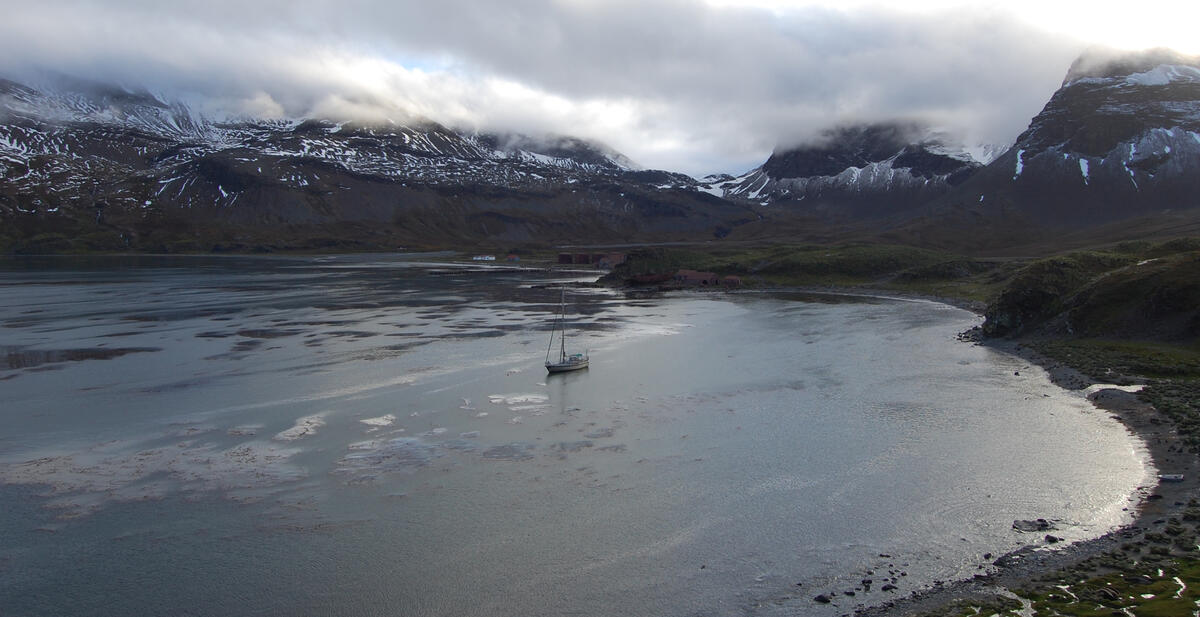
Leith Harbour, farther to the west in Stromness Bay, looks like it has been bombed. The devastion is widespread; this Scottish station was the largest of all, containing sophisticated facilities including a hospital, a theater, and even a railroad.
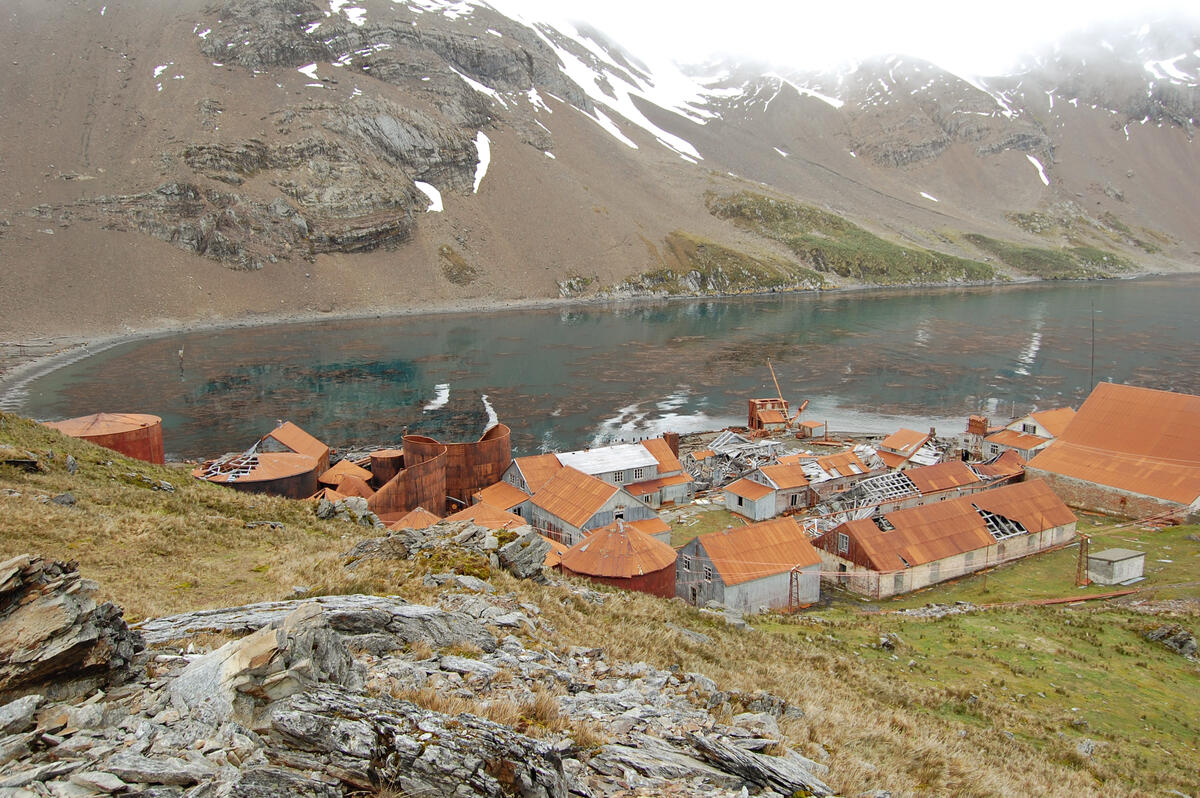
Amongst the detritus ashore are these sad looking boats, once proud tugs and whale pushers.
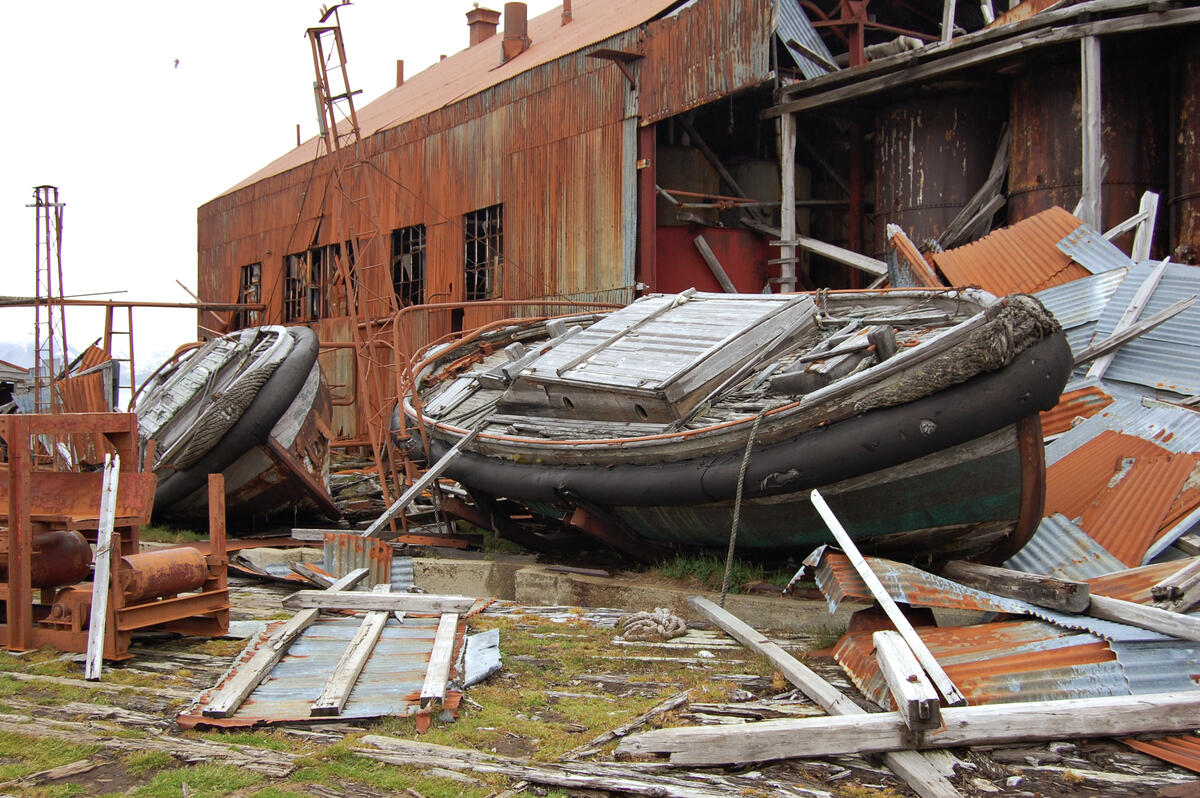
This urban resident is a reminder of whose land this really is.
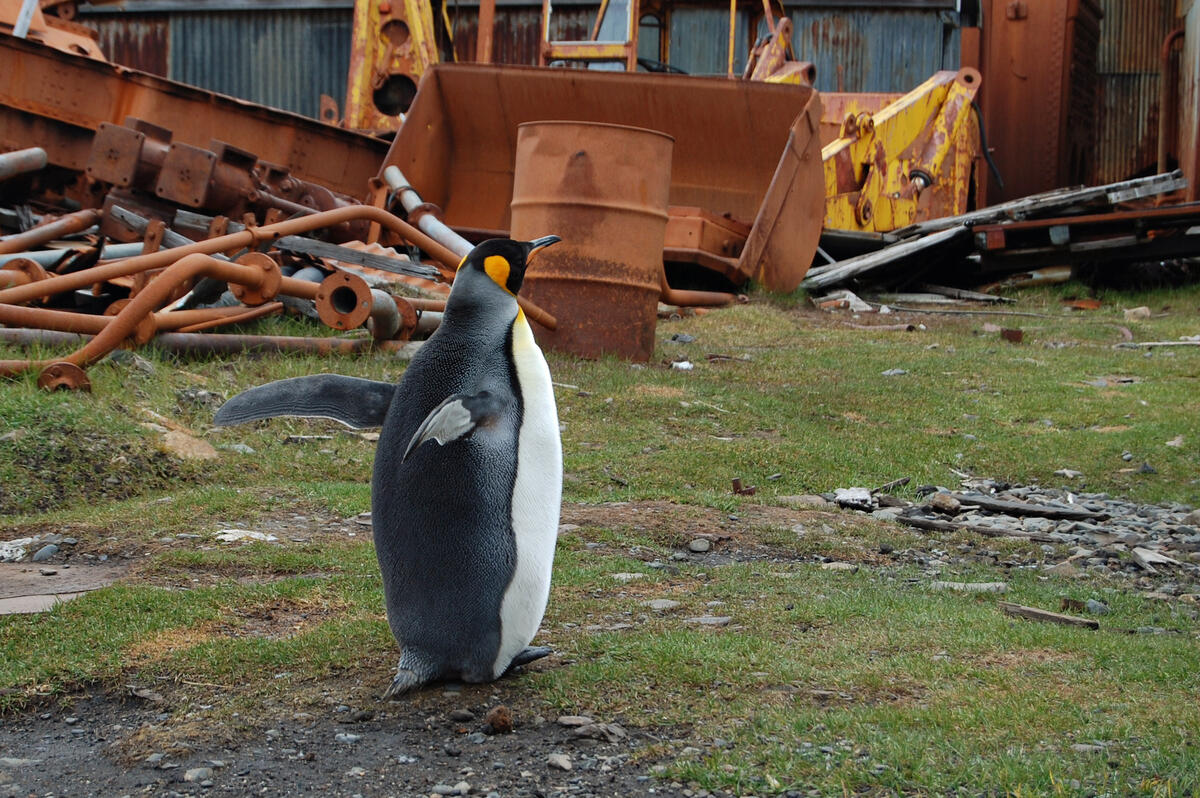
Leith Harbour was the site of the first Argentine occupation during the Falklands War. The rights to the station had been bought legitimately a few years earlier by an Argentine company which was in the process of scrapping various stations’ steel stock – the Argentine military covertly sent troops along with the steel workers prior to their invasion and occupied Leith during the conflict. Tonnes of the steel still lies stacked neatly organized ready to be shipped.
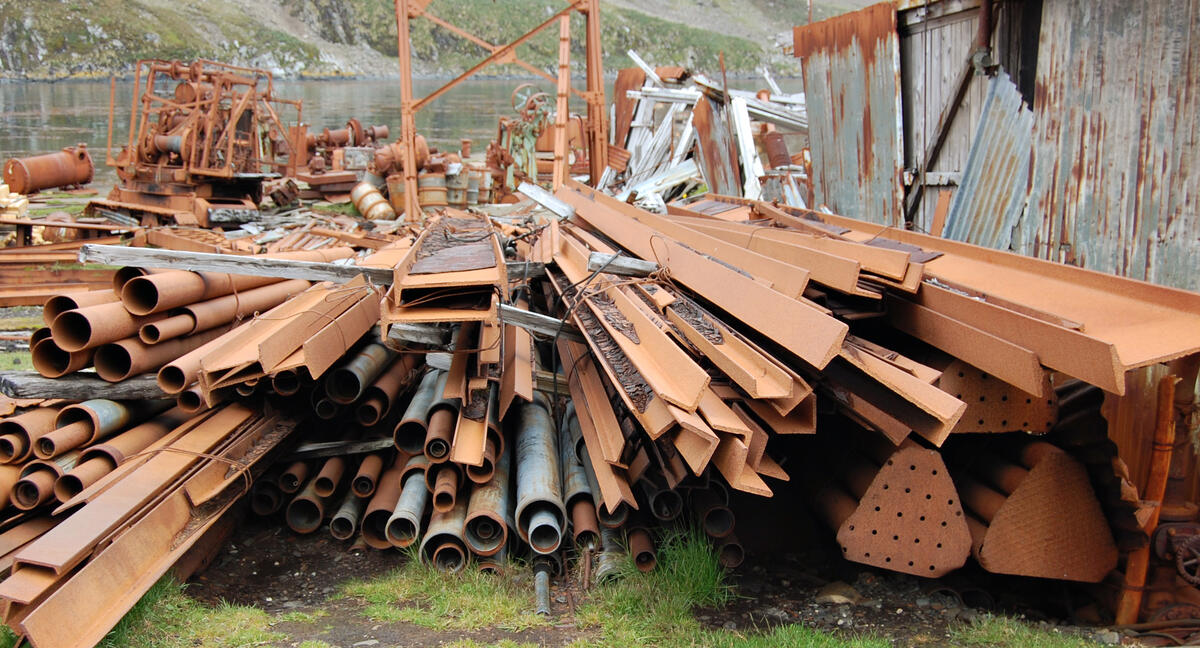
Further back in history, the whaling and sealing stations while operational were an industry worth defending (and attacking). The Germans destroyed many of the British and Norwegian factories and boats during World War II; the Royal Navy responded by arming a merchant ship to patrol the area and installing two small defenses to protect the more important harbours. This four-inch gun was manned by Norwegian volunteers trained accordingly.
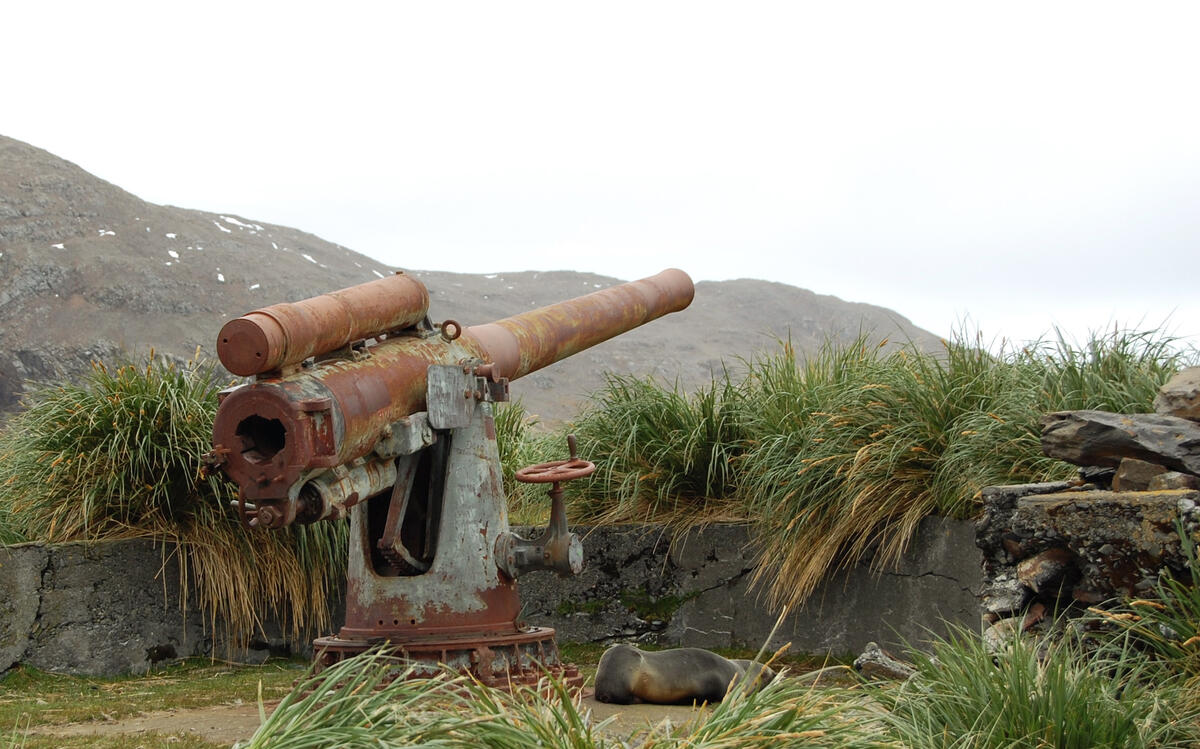
This is a blonde (not albino) fur seal morph pup, a rare but natural occurrence.
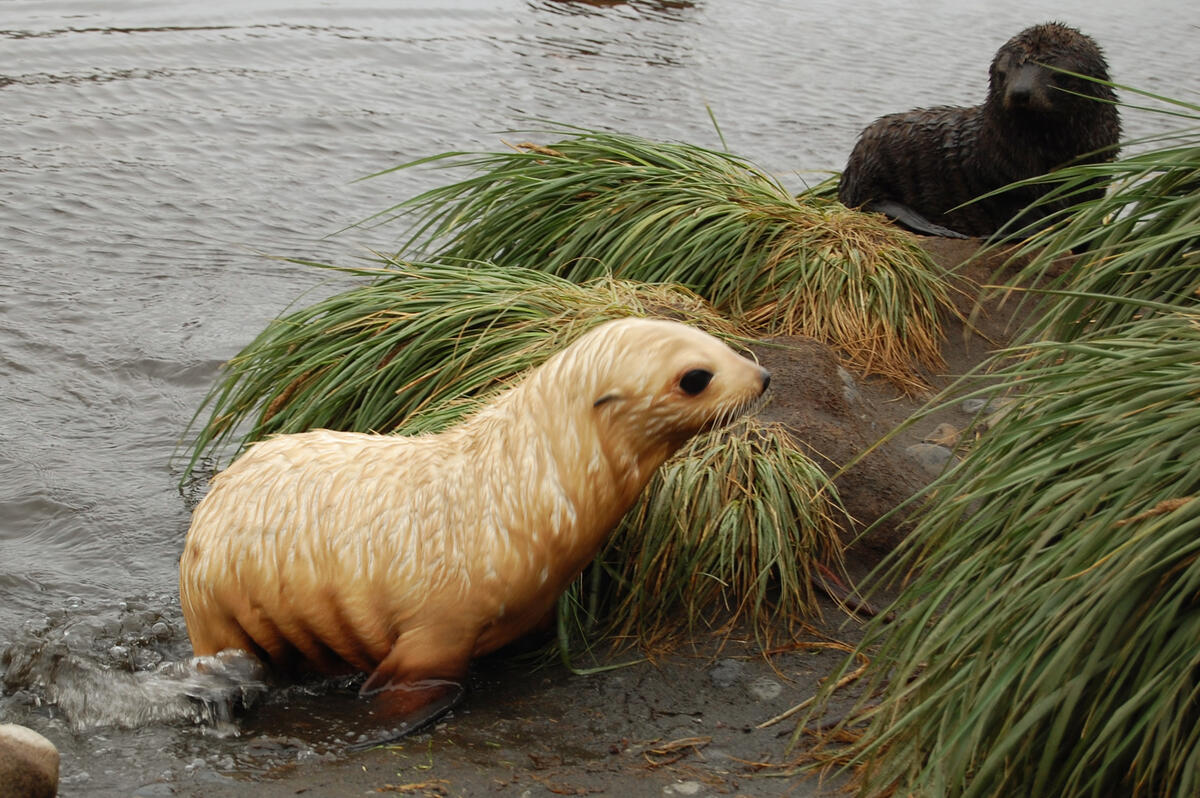
The bull was evidently productive with his harem this season.
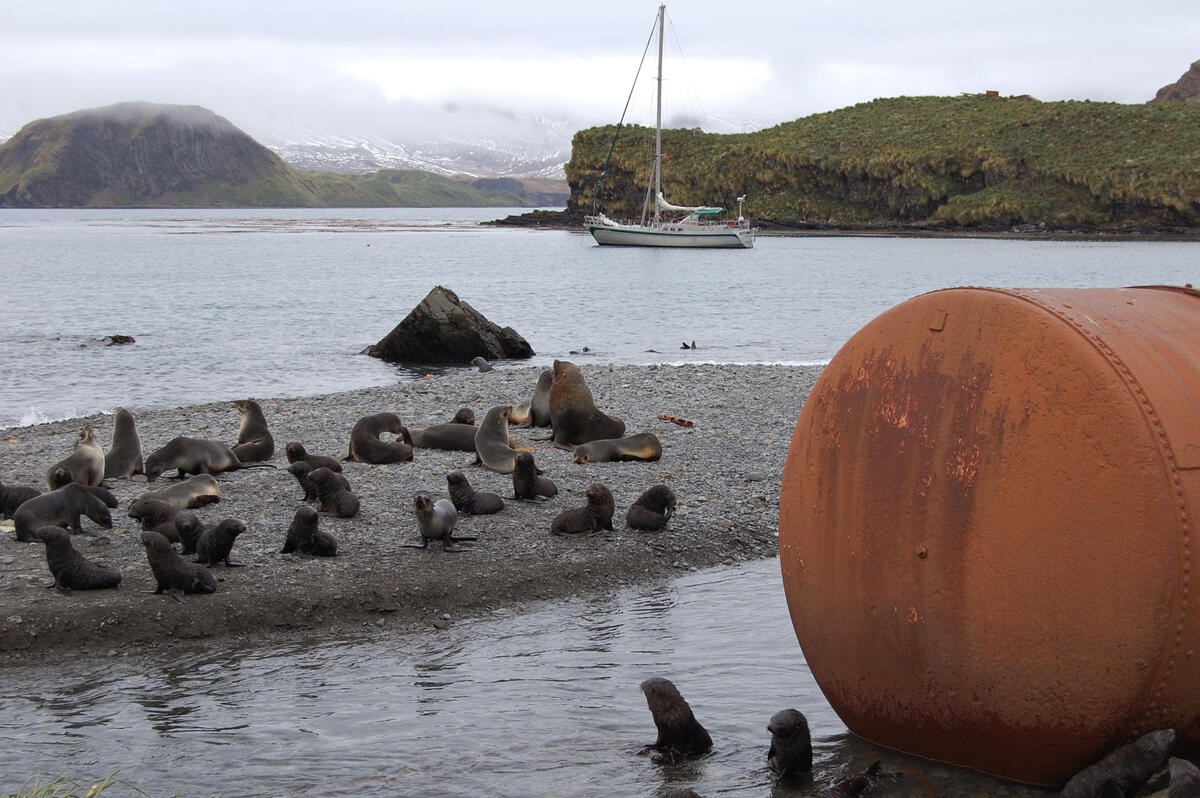
More seals awaited us at Blue Whale Harbour, farther west again, and at Salisbury Plain is one of the largest colony of penguins on the island.
